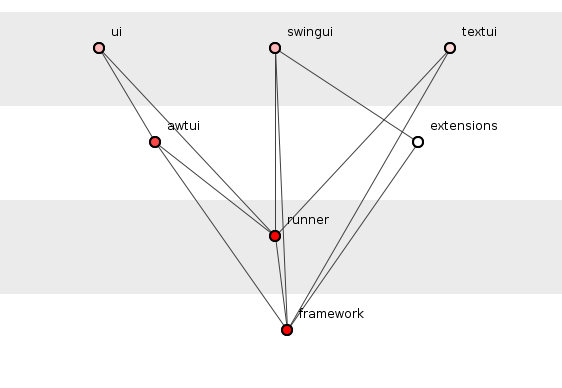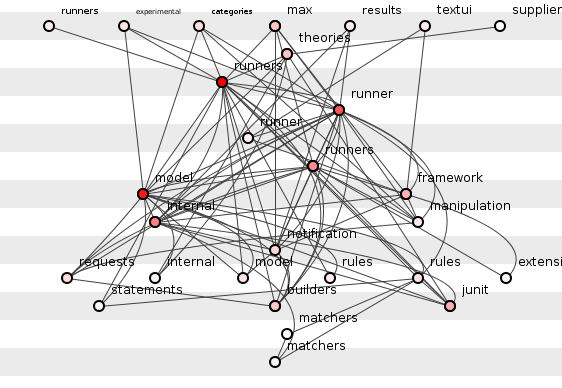Tag: architecture
MIT 6.033 Computer System Engineering, Spring 2005
MIT 6.033 Computer System Engineering, Spring 2005. Course lectures on YouTube.
Microsoft Application Architecture Guide, 2nd Edition
Rob Daigneau on Service Design Patterns
Architectural Blueprints—The “4+1” View Model of Software Architecture – 4+1view-architecture.pdf
Architectural Styles and the Design of Network-based Software Architectures
JUnit’s evolving structure
JUnit’s evolving structure. Edmund Kirwan traces JUnit’s increasing code interdependencies. From early simplicity:

To increasing tangles:

I am thinking a lot about code architecture right now and trying to learn best practices for building structures that can scale over time. This is a huge topic that a lot of smart people have strong feelings about– when I read about it I often come upon vast areas I didn’t even know existed and it is easy to suddenly feel small and anxious, like people will judge me for not knowing how to do all of it. So I am appreciating this critique as much for the critical analysis as for the obvious love and admiration the writer has for the JUnit developers. I don’t know enough yet to evaluate the actual critiques, even!
Summary.
Programmers should be forced to wear their systems’ package-structures on their tee-shirts.
Practice radial encapsulation.
JUnit is a masterpiece.
Neo4j Blog: Modeling categories in a graph database
Merengue overview Merengue v0.8 documentation
Introduction to npm – How To Node – NodeJS
Introduction to npm – How To Node – NodeJS
“The update command does a few things. – Search the registry for new versions of all the packages installed. – If there’s a newer version, then install it. – Point dependent packages at the new version, if it satisfies their dependency. – Remove the old versions, if no other package names them as a dependency. So basically, update behaves a lot like a “standard” package manager’s update command, except that it also checks to make sure that the new version isn’t going to break anything before it points stuff at it. You see, npm keeps you out of dependency hell.”